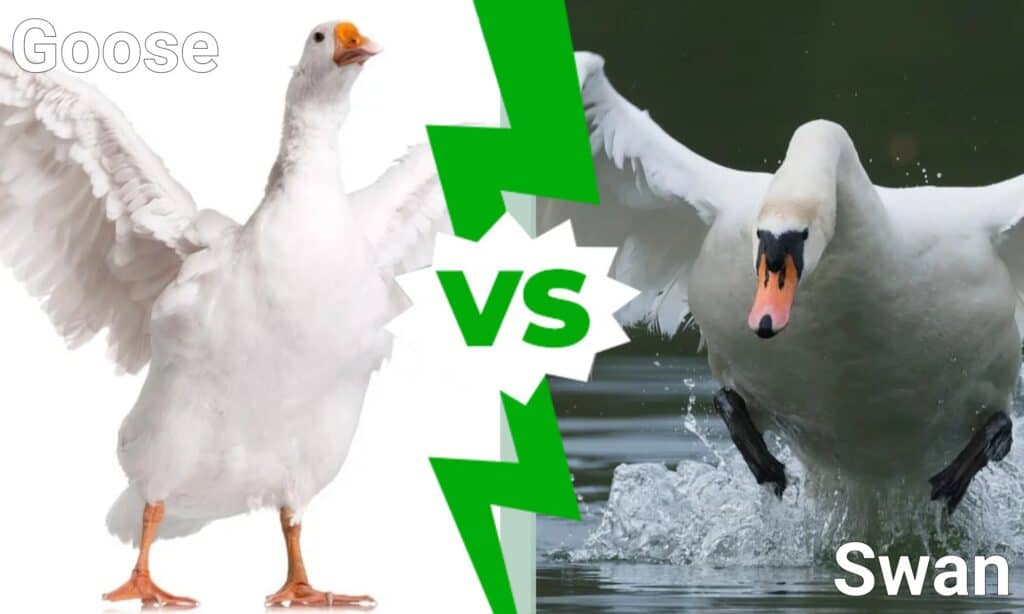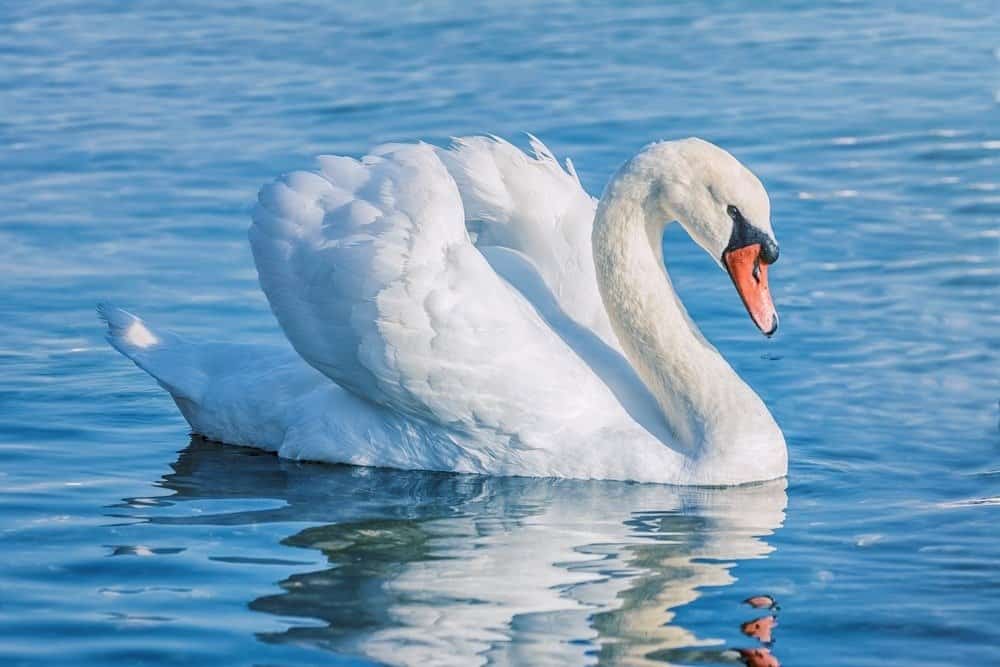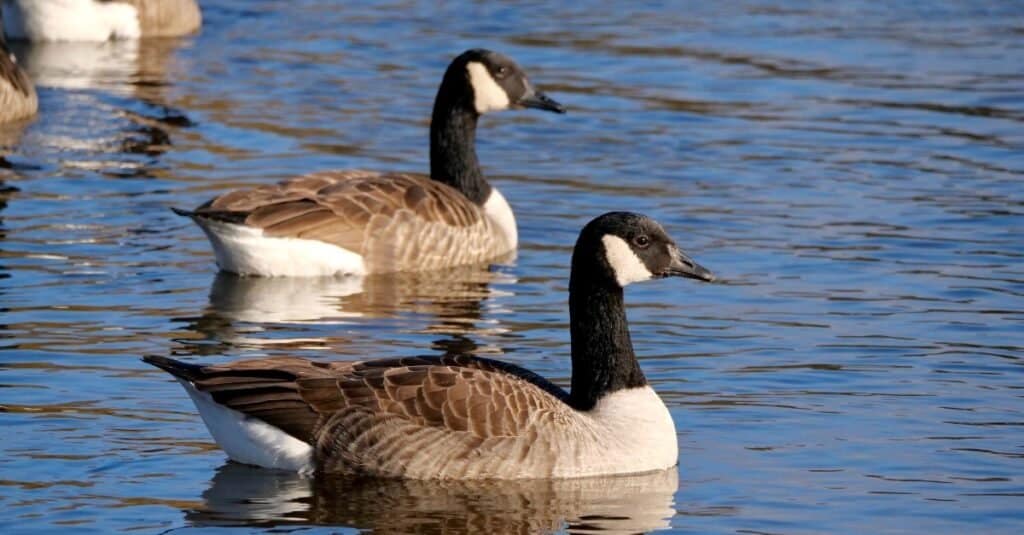Swans are large, majestic birds that are best known for their graceful appearance as they swim around large bodies of water. However, they bear a striking resemblance to geese, which is why the two are often confused. But don’t worry, as despite their similarities there are a number of key differences between them.
In this article, we’ll discover everything you need to know about geese and swans, including where they live and what they eat. We’ll also discuss their appearance and their behavior. But that’s not all as there’s much more to learn about these fascinating animals! So join us as we explore all of the differences between geese and swans.
Comparing Swan vs Goose

Swans and geese are both from the family group Anatidae which includes ducks, geese, and swans. Swans are the largest members and there are six living species which are all in the genus Cygnus. True geese are divided into two different genera – Anser and Branta. Anser contains grey geese and white geese, of which there are 11 species. Branta contains black geese, of which there are six living species. There are also two further genera of geese, but it is often debated as to whether these are actually geese or if they are actually shelducks.
Although there are some variations between the different species of geese, there are still some key differences to help distinguish them from swans. Check out the chart below to learn a few of the main differences.
| Swan | Goose | |
| Location | Europe, North America, Australia, parts of Asia | Worldwide |
| Habitat | Lakes, ponds, slow-moving rivers | Marshes, wetlands, lakes, ponds, streams |
| Size | Wingspan – up to 10 feet Weight – more than 33 pounds Length – more than 59 inches | Wingspan -up to 6 feet Weight – up to 22 pounds Length – 30 to 43 inches |
| Color | Typically all white (occasionally black) | White, black, grey, brown |
| Neck | Longer and thinner, visible “S” shaped curve | Shorter and thicker, straight with no curve |
| Behavior | Aggressive, not very social – prefer to stick with mate and young | Social, often live in flocks |
| Sexual Maturity | 4 to 5 years | 2 to 3 years |
| Incubation Period | 35 to 41 days | 28 to 35 days |
| Diet | Aquatic vegetation, small fish, worms | Grass, roots, leaves, bulbs, grains, berries, small insects |
| Predators | Wolves, foxes, raccoons | Wolves, bears, eagles, foxes, raccoons |
| Lifespan | 20 – 30 years | 10 – 12 years |
The 4 Key Differences Between Geese and Swans

Swans are large birds with a distinctive curved neck
©Sergej Razvodovskij/Shutterstock.com
The key differences between geese and swans are size, appearance, and behavior. Swans are larger than most geese, but have shorter legs. They also have a longer, curved neck and are typically always white. Additionally, swans also prefer to spend most of their time on the water, while geese are equally as happy on the land.
Let’s discuss all of these differences in more detail below.
Goose vs Swan: Size
One of the main differences between geese and swans is their size. Typically, swans are much longer and heavier than geese as well as having a much bigger wingspan. The wingspan of swans can be as much as a massive 10 feet, whereas geese are generally between 3 and 4 feet. Swans are also often more than 59 inches long while weighing more than 33 pounds. Geese generally weigh no more than 22 pounds. Incredibly, despite swans typically being the all-around bigger bird, geese actually tend to have longer legs than them. However, although the general rule of thumb is that swans are larger than geese, there is always an exception to the rule. The exceptions, in this case, come from Canada, Tundra, and Berwick geese which are often larger than swans.
Goose vs Swan: Habitat
Although swans and geese share many of the same habitats – ponds, lakes, and rivers being the most common – they actually behave vastly differently while there. This is because swans spend much more time on the water than geese do. Despite how graceful swans are while they are swimming, they are actually fairly awkward when they are on land. This is also why they spend more time feeding, and browsing for food while in the water. Their main source of food is aquatic vegetation, although they also sometimes eat small fish and worms.
Geese, although able swimmers, are less awkward while on the land and are equally as at home on the water as not. They spend much more time away from the water searching for food than swans do. Although geese do eat aquatic vegetation, they also eat a range of grass, leaves, shoots, grain, berries, and even small insects.
Goose vs Swan: Neck
Easily the most distinctive difference between swans and geese is the shape of their neck. Swans are known for their graceful appearance and their signature “S” shaped neck. Their necks are long and thin which adds to this appearance. However, when we look at geese it’s clear to see that they lack the “S” shaped curve. Additionally, their necks are much shorter and straighter as well as being thicker.
Goose vs Swan: Behavior

Geese are social birds and often live in large flocks
©iStock.com/yujie chen
Swans and geese also exhibit different behavior. Geese are very social birds and tend to live in large flocks, even during breeding season. However, swans prefer to keep only the company of their mate and their young. They also have a more aggressive nature than geese, which helps them to protect themselves from predators.
The age that both birds attain sexual maturity also differs as geese mate much earlier than swans. Most geese begin to breed around the age of 2 or 3 years while swans begin much later and don’t begin to mate until 4 or 5 years, or even as late as 7 years in some cases.
The photo featured at the top of this post is © Tone Trebar/Shutterstock.com
FAQs (Frequently Asked Questions)
Do geese and swans mate for life?
Although completely monogamous behavior isn’t that common in wild animals, both swans and geese tend to mate for life. Swans always raise their young as a mated pair, as do most geese. A common misconception around mating for life is that if one partner dies the other will never mate again, or in some cases pipe and starve to death. However, this is not true as if one of the pair dies the other will find a new mate.
Are swans and geese under threat?
There has been times over the years that different species of geese and swans have come under threat. Right now, none of the six species of swans are endangered. However, there are some geese – such as the Hawaiian goose – which are near threatened. Despite this, geese are much more common and abundant than swans. The population of geese is estimated to be more than 10 million while the population of swans is estimated to be no more than 2 million birds.
Thank you for reading! Have some feedback for us? Contact the AZ Animals editorial team.






